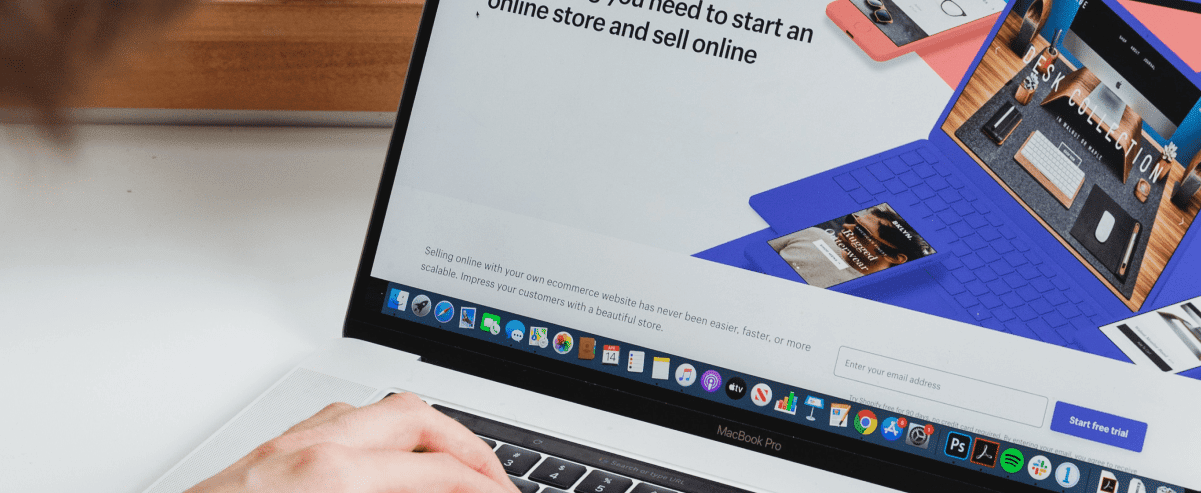In the same vein, businesses think that sales and leads will pour almost immediately once they have launched their first website, but that’s not entirely the case. Whether you already have a website up or considering a revamp, we got you covered. How should you improve your website to make the experience delectable for your customers?
Purpose of websites
Before you improve your website, we need to make sure you understand why websites are one of your business’ best friends (besides Make it Max—and we’re very friendly):
It bridges your business and customers
As a brand, you want to lay out the concrete steps for your intended target market or users to find you. The Internet is a good place to start for encouraging online interactions and transactions if you want to score some plus points (like those friendship bars in The Sims).
It strengthens your brand image
Having a website in this day and age is definitely one of the ideal ways to make sure your brand identity is solid. More importantly, creating a bespoke website keeps your user’s experience much more custom-fit to their needs—and that’s something your business has!
It has all of the important stuff in one place
From company history to contact info, having all the information your customer needs on one convenient website helps lessen the chances of wondering where the heck they can find a certain product or service, or where they can contact you. Added to that, you can accurately measure a lot of interesting metrics, like potential customers, their interest in your offerings, conversion rate, feedback—the list goes on.
So everything on your website is set up like a multi-tiered cake full of sprinkles and toppers, but you realize… no one’s taking a slice yet. They may take one or two slices, but they can tell something’s wrong. Your role as a baker is to figure out where you can improve by asking them for their feedback. Much like cakes, websites work like that as well. When you improve your website, you are essentially working to make it a pleasant experience for your customers.
How do I improve my website then?
We won’t leave you in suspense any longer, time to get started improving your website! Here are our 10 best pieces of advice for selling out those pie slices in no time:
Prioritize loading times
According to Speedy.Site, the average time a person waits for a website to load is 1.28 seconds on desktop and 2.5 seconds on mobile. Of course, this may depend on how patient your visitors are, but if your website takes longer than that to completely load up, you may potentially lose a customer or client. Google has a helpful tool that can test a webpage’s overall loading time, perfect as a starting point for when you want to improve your website. It’s a lot of technobabble, so you might want to get a skilled developer to translate the terms for you.
Make it Mobile-Perfect (see what we did there?)
Just like you and me, users normally access information in the palm of their hands. We bet you’re reading this blog post on your phone right now, but that’s just a wild guess. Unfortunately you are now reading this blog post from your desktop.
It’s recommended that your website looks great on a normal smartphone before it is viewable on big monitors. You don’t want your users squinting at their phones like they had just read a bad review of their favorite show. There’s more going into that than one might think, and luckily our designers here at Make it Max are professionally trained in making sure a website works for everyone on every mobile device.

Keep the copy attractive
Hitting the right sweet spot for copy means you’re willing to be playful while also keeping that business side of your brand in check. So while you want to communicate your products or services clearly, sprinkle in a little bit of originality every now and then to improve your website (as long as it fits your brand voice!).
Update your content
The Internet is like your middle-aged uncle who never goes about his day without reading this morning’s newspaper. Because technology moves fast, it pays to always be up-to-date with your content as much as possible. This could mean doing a simple change of products up for sale on your homepage, or rewriting your About Us page to add more important details. Blogging, in particular, helps you get found on Google, just like how you found our article. See? It really works! 😉
Simplify your navigation
The last thing you want is for your visitors to sit in front of your webpage, waiting for the information they need to pop up. There’s magic in the simple things, too!
Identify the key areas your users would likely go to find necessary information. This way, you can keep it locked in for easy access as a way to improve your website even further.
Let colors speak
Colors play a big role in where you want to lead your visitors. Contrasting colors help focus the visitor’s eyes towards what you want them to see, like time-bound promos and/or attractive freebies. Shades of blue may also be used when offering freebies as long as they sign up to your website. On the same note, consider how your website looks as a whole with these colors: are they too saturated? Are you using too many colors in one place? In order to improve your website, you have to make sure that your website is easy on your customers’ eyes.
Retain what you need
We get the struggle all too well—cramming all the info inside a single section of a webpage may seem tempting, but it’s not always ideal when the end goal is to improve your website. The more concise your paragraphs are, the better it is for your visitors to ingest the important information. You’ll want them to take note of bullet points so they can easily share it with their friends in a fun Zoom call.
Fix your 404s
A 404 webpage is what a visitor sees when they go to a specific page, but the website doesn’t respond back. Talk about one-sided, right? Some pages deliberately take users to this page because of broken links or pages that have been moved, so it’s best to have a custom 404 page until the problem is sorted.
On the same note, it’s important to tend to these links for fixing in order to keep your customer on your site. If these links don’t work, they will show up as a blank page; you don’t want your users thinking those certain pages aren’t ready! Also, use specific tools to spot those pesky 404s, or have your developer do that for you.
Create engaging and effective content
Paying special attention to your content helps make the customers stick to your brand and help you stand out from the rest, so whether it’s visual media or blog posts like this, it’s important to focus on what sticks or not. Tracking important events related to your business is a good start to improve your website!
Use popups only when needed
Popups are like uninvited visitors on a dedicated night of relaxation. And they don’t happen once, but thrice! Nobody wants their night disturbed.
Excessive popups tend to be annoying for most visitors for their repetitive nature. It may even be the reason a potential customer or client clicks out of the website instead of reeling them in! So with this, you may want to revisit your marketing strategies to improve your website by making sure that these popups are happening for the necessary reasons.
To add to this point: back in 1984, Dr. Robert B. Cialdini wrote a book titled Influence: The Psychology of Persuasion. In this book, he discusses the 6 tips to convert visitors into customers or clients:
1. Reciprocity (giving something in return)
2. Commitment/consistency (offering something useful to the visitor’s self-image)
3. Social proof (“see what people have to say about our products!”)
4. Authority (having a notable person be the face of your brand)
5. Liking (presenting something you have in common with your audience)
6. Scarcity (“limited time only!”)
We referred to these principles when we helped Booking.com out in finding the right kinds of clients they needed. While it’s alright to provide a sample or two to your customers, it’s also important to set yourself up as the brand your customers or clients need with the right strategy and offer.
When in doubt, take it slow
Though it may seem overwhelming to consider changes to your website (you might be scrambling to get them done right now), the first step is to identify what needs improving. Website improvements are usually done in versions, so it’s also best to prioritize what needs to be added in before the secondary additions.
Have a (virtual) coffee with your visitors
We’ve gone on and on about the fool-proof tips to improve your website, so here’s another bonus (and most important) tip: reach out to your visitors first. Doing so will help give you the necessary feedback and how they feel about your website overall (you can provide something in return for the trouble, too). Why settle with the guessing game when you can lead the dance, right? You’ll never know—the points that come out of these feedback rounds may just be the ones you need the most to improve your website.
If you’re still on the fence about talking to your users, don’t worry; we wrote a blog post about user testing so that you’re not in the dark about making the first move. If you need our help to improve your website or are even thinking about setting up a new one soon, we can be the right team for you! Hit us up with a message so we can set a coffee date with you.






0 Comments